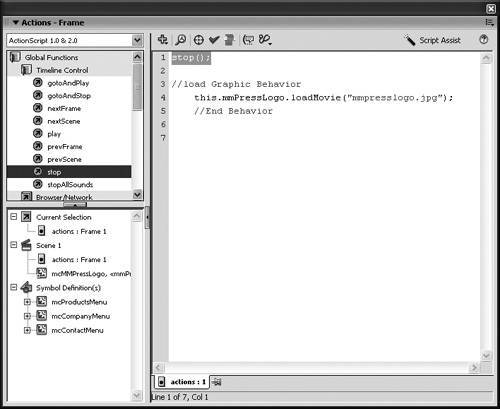Using Actions to Control the Timeline
| ActionScript can be used to control many features in Flash. One of the more common uses of ActionScript is to control the Timeline of the main Flash document or the Timelines of movie clip symbols. In this exercise, you will add an action to control the main document Timeline with the Actions toolbox. You should still be working with bookstore10.fla in this example.
|
EAN: 2147483647
Pages: 230
